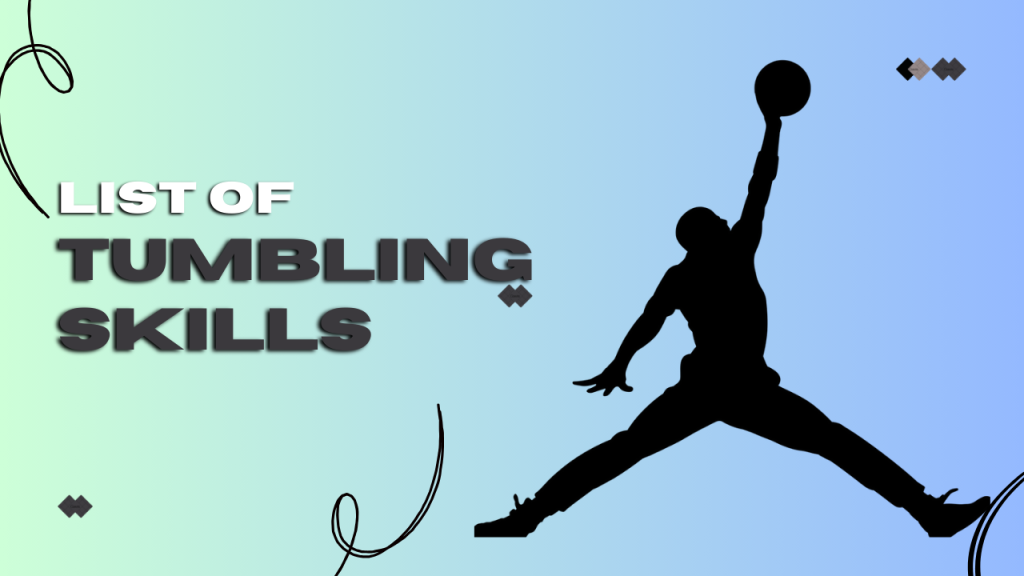In the dynamic world of gymnastics, cheerleading, and acrobatics, mastering tumbling skills is a thrilling and rewarding journey. Tumbling combines strength, coordination, flexibility, and body control, making it one of the most impressive and foundational aspects of performance-based sports. Whether you’re an aspiring gymnast aiming for competitive routines, a cheerleader enhancing your stunts, a dancer adding powerful tricks to your choreography, or simply someone fascinated by high-flying, graceful movements tumbling offers something for everyone.
Each tumbling skill requires a unique blend of athleticism and precision. From basic rolls and handstands to advanced flips and twisting passes, learning tumbling builds confidence, body awareness, and core strength. These skills not only improve physical performance but also contribute to artistic expression, allowing athletes to flow seamlessly from one move to another.
In this article, we’ll explore a comprehensive list of tumbling skills, starting from beginner-friendly basics to more complex techniques used by elite gymnasts and acrobats. Whether you’re training for fun, fitness, or competition, understanding these skills will help you track your progress and set achievable goals. Get ready to dive into the exciting world of tumbling and discover the moves that define this powerful discipline.
List of Tumbling Skills

Now, let’s explore a comprehensive list of tumbling skills
- Forward Roll
- Backward Roll
- Cartwheel
- Roundoff
- Back Handspring
- Front Handspring
- Aerial
- Back Tuck
- Layout
- Twisting Layout
- Double Back
- Tumbling Pass
- Whip Back
- Triple Twist
- Quadruple Twist
- Combination Passes
Let’s discuss each of these tumbling skills in detail:

The Basics: Tumbling Skill Fundamentals
Intermediate Tumbling Skills
- Back Handspring: A dynamic skill where the athlete flips backwards, landing on their hands before propelling themselves back onto their feet. This move requires substantial upper-body strength and courage.
- Front Handspring: Similar to the back handspring but executed forward. Front handsprings are a staple in cheerleading routines, showcasing the athlete’s power and precision.
- Aerial: An intricate move involving a cartwheel with no hands touching the ground, showcasing exceptional balance. Aerials are often performed by gymnasts on the balance beam.
- Back Tuck: A backflip without using hands for support, requiring great height and control. It’s a crowd-pleaser in both gymnastics and cheerleading competitions.
Advanced Tumbling Skills
- Layout: A full-body extension flip with a straight body position, commonly seen in professional gymnastics routines. A perfect layout is a testament to a gymnast’s strength and flexibility.
- Twisting Layout: Adding spins or twists for a more challenging variation. Twisting layouts are a favourite in artistic gymnastics floor exercises.
- Double Back: Two backward flips in succession, typically executed by elite gymnasts. This skill demands not only athleticism but also exceptional air awareness.
Combining Tumbling Skills
- Tumbling Pass: In the realm of gymnastics floor exercises, the tumbling pass stands as a dynamic and integral element, showcasing the athlete’s versatility and prowess. This sequence of connected tumbling skills is not only a testament to the gymnast’s physical capabilities but also a captivating display of their artistry.
- Whip Back: The whip back is a rapid and visually striking manoeuvre that adds a dynamic flourish to gymnastics routines. This backward somersault is executed with speed and precision, serving as a seamless link between different skills.
- Triple Twist: The triple twist stands as a pinnacle achievement in a gymnast’s career, showcasing an extraordinary level of athleticism and skill. This awe-inspiring feat involves executing three full rotations during a single flip, requiring a combination of strength, precision, and spatial awareness.
Pushing the Limits: Expert Tumbling Skills
- Quadruple Twist: The Quadruple Twist stands as the epitome of twisting skills in gymnastics, representing the pinnacle of aerial athleticism. This extraordinary feat involves executing a staggering four rotations during a single flip, pushing the boundaries of what was once deemed physically possible.
- Combination Passes: Advanced gymnasts, seeking to showcase their unparalleled skills and creativity, often craft unique combination passes that weave together multiple flips, twists, and somersaults. These combination passes transcend the boundaries of conventional routines, creating breathtaking sequences that leave spectators in awe.
Conclusion
In the dynamic world of gymnastics and acrobatics, mastering a variety of tumbling skills showcases the extraordinary potential of the human body. Each move, whether it’s a basic forward roll or a complex quadruple twist, reflects a combination of strength, flexibility, balance, and precise technique. These skills aren’t just about physical ability they also embody grace, control, and artistic expression. Beginners start with foundational movements like rolls, handstands, and cartwheels, gradually building the strength and confidence needed for more advanced techniques. As gymnasts progress, they tackle challenging skills such as aerials, back handsprings, and twisting flips, all of which demand hours of practice and unwavering dedication. The journey through these tumbling techniques is not only physically demanding but also mentally rewarding, teaching perseverance, discipline, and body awareness. Whether performed on the mat, floor, or beam, tumbling remains one of the most visually captivating and celebrated aspects of gymnastics and acrobatic performance. Read more on copypastequickly.
FAQs
How can I start learning tumbling skills?
Begin with basic skills and seek professional coaching to ensure safety and proper technique.
Are tumbling skills only for gymnasts?
Tumbling skills are also popular in cheerleading, dance, and acrobatic performances.
Is it too late to learn tumbling skills as an adult?
It’s never too late to start, but progress may be slower than beginning at a younger age.
Related Post:






[…] READ ABOUT: List of Tumbling skill -Your Guide to Mastering Moves […]